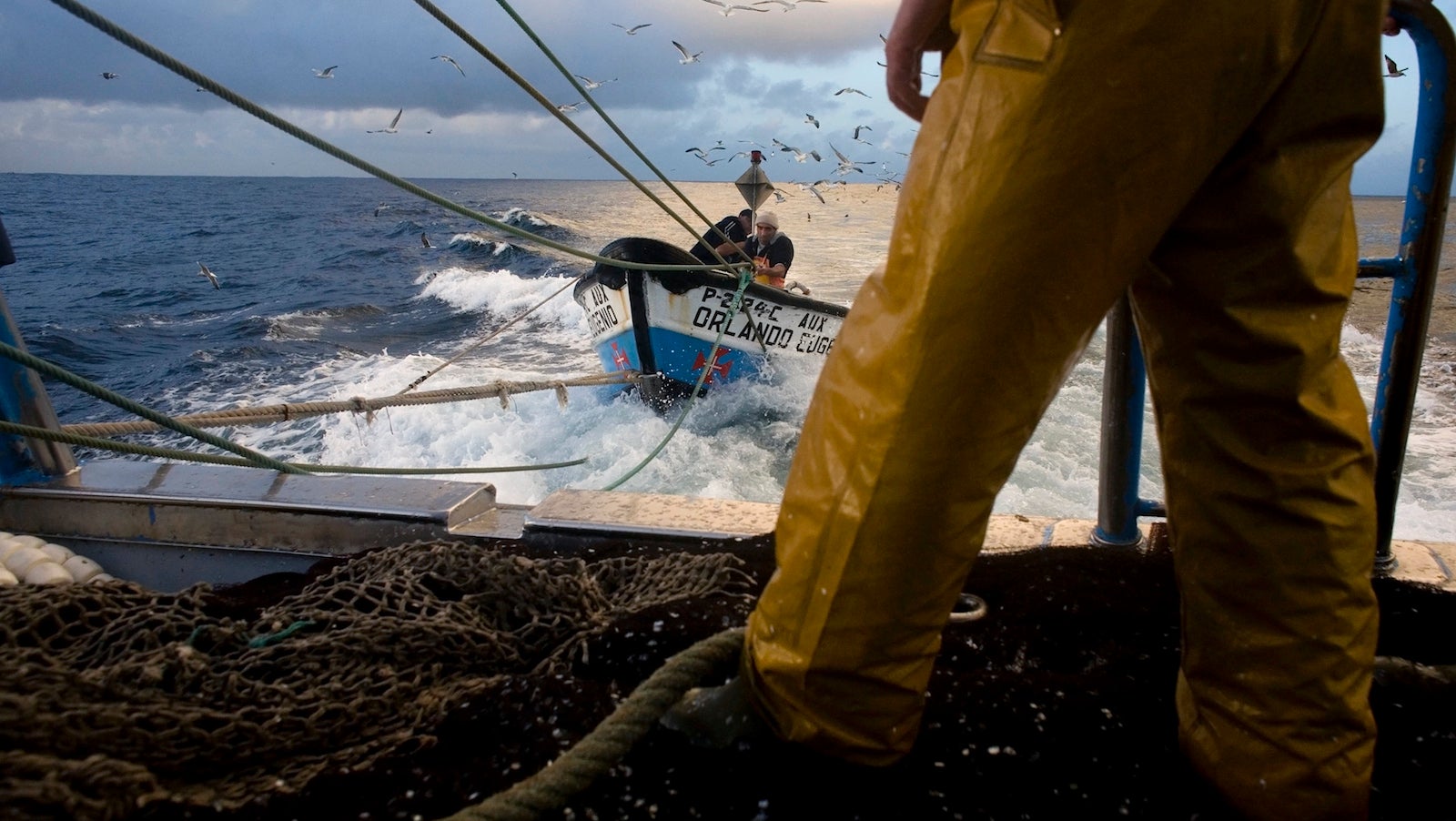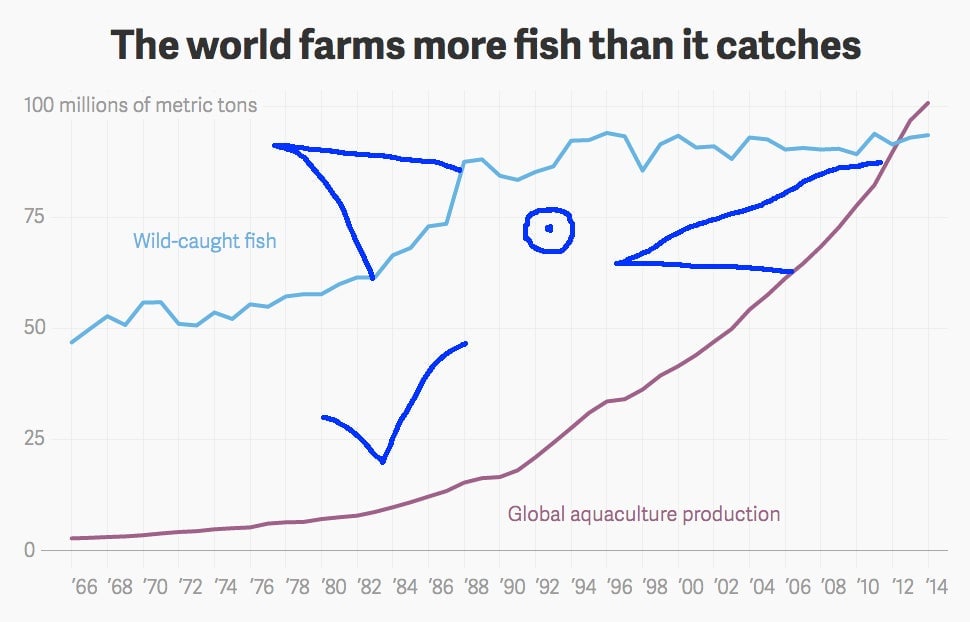Charted: The rise of sustainable fishing looks like the shape of things to come
In the spirit of sharing data visualizations that appear to be right on the nose, here’s a chart flagged by our friends at the World Bank. It shows a somewhat surprising—indeed, hopeful—result: That humans are now farming more of our own seafood than we catch in the wild.


In the spirit of sharing data visualizations that appear to be right on the nose, here’s a chart flagged by our friends at the World Bank. It shows a somewhat surprising—indeed, hopeful—result: That humans are now farming more of our own seafood than we catch in the wild.
Don’t you think it looks like a fish?
How about now?

Jokes aside, this chart matters a great deal for one of the United Nations’ new sustainable development goals: conserving the ocean for long-term use. Over-fishing has battered fishing grounds and driven some species to near extinction, a problem for the 60 million people, many of them poor, who depend on wild fish for economic security, and a threat to the 1 billion people on Earth who depend on fish for their main source of protein.
The rising trend in aquaculture and the slow growth of wild fishing suggests that enforcement of illegal fishing—which still accounts for as much as 26 tons of each year’s catch—has increased, even as farming techniques have become more productive and economical.
There are many environmental threats to the ocean: dead zones, where there isn’t enough oxygen for life; algal blooms that overwhelm the existing ecosystem; and old-fashioned habitat loss and over-fishing. Today, with more fish being farmed, there is hope that the world can set aside more of the ocean for protection and recovery. That way, future generations can share in some of Poseidon’s bounty.